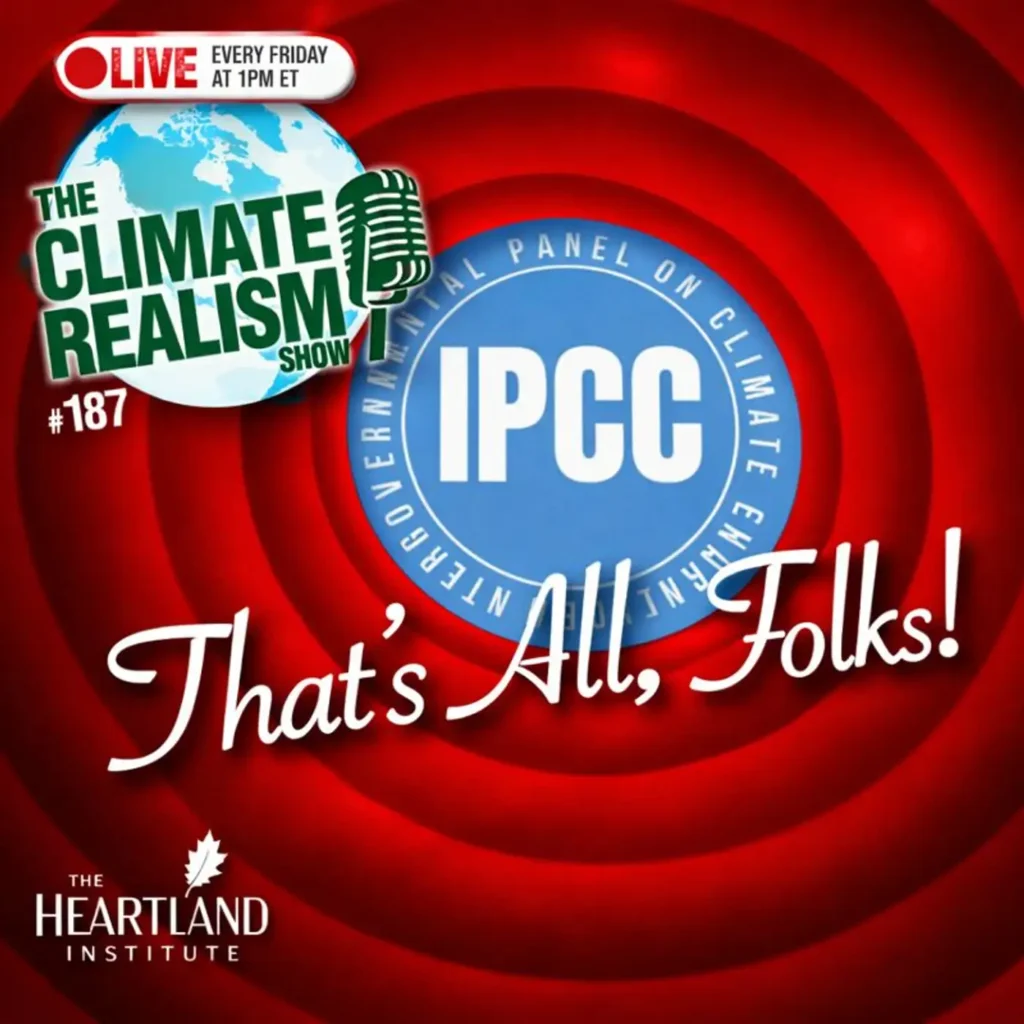Those promoting the climate delusion (the unverified belief humans are causing catastrophic climate change) like to reference public surveys showing a majority of the public believe humans are causing climate change and are concerned about it. Indeed, polls taken in recent years consistently show at least a slight majority of those surveyed, whether representing the general public at large, registered voters, or most other sub-segments of the population, are “moderately,” “very,” or “extremely” certain humans are causing climate change and “moderately,” “very,” or “extremely” worried or concerned about it.
Most recently, a survey conducted by the Washington Post/Kaiser Family Foundation (Post/Kaiser) from July 9 through August 5 that included the views of kids as young as 13 also confirmed people are concerned about climate change.
As with past polls, the real story lies is in what the headlines ignore, and pollsters choose not to mention. The Post/Kaiser survey confirms, once again, what past polls have shown: peoples’ concerns about catastrophic climate change are about a mile wide and an inch deep.
Ask the public about almost any public policy issue frequently in the headlines and poll respondents will say it is important: clean air, crime, economic growth, education, immigration, jobs, retirement, taxes, terrorism, and more. However, what we really need to know is how important each issue is relative to other matters of concern. In a world of limited resources and limited voter attention, government must focus on what the public is most concerned about and what will motivate them when they go to the polls.
Yet in poll after poll, climate change consistently ranks at or near the bottom on the public’s list of concerns. For instance, a United Nations poll surveying more than 7 million respondents from 195 countries asked participants to rank 16 priorities. A quality education ranked first and “Action Taken on Climate Change” ranked dead last, receiving 300,000 fewer votes than “Access to Telephone and Internet,” which finished 15th on the list.
The results of the Post/Kaiser poll are no different. Survey participants were asked, “How important are the following issues to you personally?: climate change, the economy, gun policy, health care, immigration, and renewable energy. All came in as important, yet climate change came in second to last among adults and third to last among teens in the number of people rating it as either “extremely” or “very” important. In a surprise to me, more adults (64 percent) found climate change extremely or very important than youths (61 percent). The only category that consistently ranked lower than climate change was “renewable energy.” Had the Post/Kaiser pollsters added education, crime, school safety, reliable power supply, or a host of other issues commonly listed in such surveys to its list of concerns, I’m quite certain climate change would have ranked even lower than it did in the level of importance.
Furthermore, a 2017 University of Chicago and Associated Press-NORC Center for Public Affairs research poll; a 2015 survey conducted by The New York Times, Stanford University, and Resources for the Future; and the Post/Kaiser poll found the public (represented by survey participants) wants to fight climate change only if it can be done for free or at very little cost. Even I was surprised by how little money, people were willing to spend to save the planet from a so-called climate crisis!
More than half (60 percent) of Post/Kaiser survey respondents said they believed the world had less than 10 years to prevent the worst effects of climate change (with most of those respondents claiming the world has two years or less to act), and 70 percent of respondents were “very” or “somewhat” worried climate change would harm the health of Americans.
Despite this, 51 percent of those surveyed would be “somewhat” or “strongly” opposed to paying a $2 monthly tax on U.S. residential electric bills to pay for the fight against climate change. Similarly, 61 percent would reject a 10 cents per gallon increase in the gasoline tax to fight climate change. The number of respondents opposed to electric bill fees and gas tax hikes rose sharply when the proposed fees were increased: 71 percent oppose a $10 monthly tax on U.S. residential electric bills, and 74 percent oppose increasing the gas tax by 25 cents per gallon. Yet these relatively modest cost increases are far below the multi-thousand dollar annual household price increases that would result from the Green New Deal (GND), or even the multi-hundred dollar price hikes that would result from the GND-lite carbon tax proposals being offered to fight climate change by a very few moderate Republicans in Congress.
Among the adults surveyed, 57 percent would also oppose adding to the national debt to reduce greenhouse gas emissions.
Thankfully, despite the constant bashing of fossil fuels among climate alarmists, and the media outlets that treat their statements as gospel truth, only a minority of the adults and teens surveyed believe the U.S. needs to drastically reduce its fossil fuel use in the next couple years to save the planet.
It would be interesting to ask how many people would support actions proposed to fight climate change—like the fossil fuel restrictions contained in the Paris climate agreement or the near term ban of all carbon dioxide emissions proposed in the GND—if those polled were informed the actions would have virtually no effect on reducing future temperatures, disease outbreaks, hurricanes or sea level rise. However, pollsters never ask this question.
People may be worried about climate, but they are far more concerned about many other things with more direct impact on their lives. This is why when election time comes, a wise politician, except maybe in a few of the bluest liberal political enclaves, will focus more on crime, the economy, education, jobs, national security, privacy, retirement, or almost any other topic except global warming.
— H. Sterling Burnett
SOURCES: Washington Post/ Kaiser Family Foundation; Environment & Climate News; The Heartland Institute; Environment & Climate News
IN THIS ISSUE …
Data show decline of extreme hydrologic events during warm periods … Temperature, other data, tampered with to “prove” warming
DATA SHOW DECLINE OF EXTREME HYDROLOGIC EVENTS DURING WARM PERIODS
Claims that purported anthropogenic climate change will lead to more extreme, “damaging hydrological events,” (DHE) are not supported by historical reconstructions of past climate shifts, according to a recent paper in Scientific Reports, a Nature publication. Climate models and the theory of anthropogenic climate change indicate planetary warming will result in DHEs, in which wet areas will experience more heavy precipitation events, causing floods, and arid areas will experience more frequent and severe droughts.
To test that theory, the authors assembled the longest, most comprehensive reconstructive record thus far produced of DHEs for Italy and the Mediterranean region as a whole, covering 674 such events from 800 AD to 2017. They chose to study Italy and the Mediterranean because there is an abundance of archival data available to reconstruct past temperature events for the region. Focusing particularly on the relatively warm Medieval Climate Anomaly (MCA) from 800 through 1249, the relatively cold Little Ice Age (LIA), from 1250 to 1849, and the period of recent warming (RW), since 1850, they found DHEs were less severe during warmer periods including the MCA and RW, and more severe and frequent during the colder periods, like the LIA, although the frequency and severity of DHEs varied annually and on multidecadal scales.
Evidence indicates human activities have contributed to flood, such as major floods that occurred in the years after significant deforestation. However, the authors established natural factors largely drive the increase or decline of DHEs across the region over decades and centuries.
Solar and volcanic variations seem to have some effect on DHEs, but the authors found the most important, consistent driver of DHEs are changes in the Atlantic Multidecadal Variability (AMV)—the shift in the Atlantic ocean’s currents from transporting warmer waters to cooler waters and back over decades. In general, the frequency and severity of DHEs across Italy and the Mediterranean region decline when the AMV is in a positive mode and more severe when it shifts to a negative mode.
As the authors write, there were relatively few DHEs “during the warm [MCA] dominated by a positive phase of the AMV. More frequent and heavier storms prevailed during the cold [LIA], dominated by a more negative phase of the AMV. Since the mid-19th century, a decreasing occurrence of exceptional hydrological events is evident, especially during the most recent decades, but this decrease is not yet unprecedented in the context of the past twelve centuries.”
To repeat, despite the significant increase in greenhouse gases over the past half century, “During the recent warming, the AMV has reverted to a positive mode, with decreasing storms and a sudden decline of floods in Italy during the 20th century.”
In short, this research shows, across the Mediterranean region at least, nature, not human fossil fuel use, drives climate change and extreme weather.
SOURCE: Nature: Scientific Reports
TEMPERATURE, OTHER DATA, TAMPERED WITH TO “PROVE” WARMING
Paul Homewood, operator of the “Not A Lot Of People Know That” climate blog, has long exposed instances wherein data has been manipulated to sell the climate delusion. Recently, he analyzed data from ground-based temperature stations in rural Paraguay and other isolated locations in South America and found the graphics published by official agencies showed a significant rise in temperatures over the past 60 years, while the actual temperatures recorded indicated there has been a cooling trend. In other words, the political appointees at science agencies had adjusted the data to show a warming trend to fall in line with the so-called “scientific consensus” that humans are causing dangerous global warming. In Paraguay and elsewhere in South America, temperatures from each of the measuring stations Homewood examined were adjusted to make past temperatures appear cooler than was actually measured, and present temperatures were adjusted to appear warmer than measured, producing a significant warming trend.
This discovery led Homewood to examine temperature data from the arctic region, from Canada to Siberia, which contains among the most pristine temperature stations on earth—those least affected by artificial sources of heat like concrete, development, and engines. Unsurprisingly, in the light of Homewood’s and others’ history of exposing data manipulation to advance the claims of a climate crisis, Homewood found:
“… in nearly every case, the same one-way adjustments have been made, to show warming up to 1 degree C or more higher than was indicated by the data that was actually recorded. This has surprised no one more than Traust Jonsson, who was long in charge of climate research for the Iceland met office (and with whom Homewood has been in touch). Jonsson was amazed to see how the new version completely ‘disappears’ Iceland’s ‘sea ice years’ around 1970, when a period of extreme cooling almost devastated his country’s economy,” reports the Telegraph.
In short, even within the span of the lives of many people living today, when they were around to have actually experienced the truth about past temperatures and, in the case of Iceland, sea ice levels, climate alarmists of the present are manipulating data to alter what we thought we knew about the past. This data manipulation—this “believe what we tell you about past temperatures, not what the actual data and your personal experience shows you to have occurred,” is positively Orwellian.
SOURCES: Telegraph; Not A Lot Of People Know That



